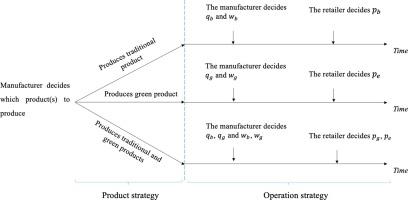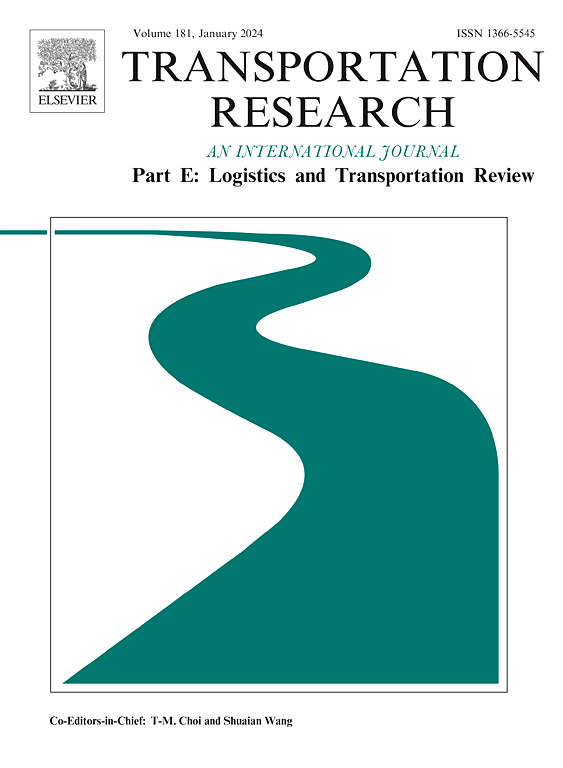在消费者具有社会责任感的情况下,平衡环保供应链的价格和质量决策
IF 8.3
1区 工程技术
Q1 ECONOMICS
Transportation Research Part E-Logistics and Transportation Review
Pub Date : 2024-11-14
DOI:10.1016/j.tre.2024.103848
引用次数: 0
摘要
鉴于人们对能源消耗和消费者社会责任的日益关注,生产棕色产品的企业应考虑过渡到对环境危害较小的绿色替代品。为此,我们采用斯塔克尔伯格模型分析了三种产品线策略下棕色产品和绿色产品(如汽油车和电动车)的价格和质量:只生产棕色产品、只生产绿色产品以及两种产品都生产。研究结果表明,在所有策略中,单一产品线中棕色产品的质量最高。从批发和零售价格来看,绿色产品的价格高于棕色产品,而单一产品线中两种产品的价格都超过了双产品线。有趣的是,生产商更倾向于双产品线战略,而零售商更倾向于销售棕色产品。此外,只销售棕色产品可以带来更高的消费者剩余,而只生产绿色产品则可能带来最低的环境影响。本文章由计算机程序翻译,如有差异,请以英文原文为准。

Balancing price and quality decisions of the environmental supply chain in the presence of socially responsible consumer
Given the increasing concerns about energy consumption and rising consumer social responsibility, firms producing brown products should consider transitioning to greener alternatives that are less harmful to the environment. To examine this, we employ a Stackelberg model to analyze the price and quality of brown and green products (e.g., gasoline and electric vehicles) across three product-line strategies: producing only brown products, producing only green products, and producing both. Our study reveals that the quality of brown products in a single product line is the highest among all strategies. In terms of wholesale and retail prices, green products are priced higher than brown products, and prices for both products in a single product line exceed those in a dual product line. Interestingly, manufacturers prefer a dual product line strategy, while retailers favor selling brown products. Additionally, selling only brown products can result in higher consumer surplus, whereas producing only green products may lead to the lowest environmental impact.
求助全文
通过发布文献求助,成功后即可免费获取论文全文。
去求助
来源期刊
CiteScore
16.20
自引率
16.00%
发文量
285
审稿时长
62 days
期刊介绍:
Transportation Research Part E: Logistics and Transportation Review is a reputable journal that publishes high-quality articles covering a wide range of topics in the field of logistics and transportation research. The journal welcomes submissions on various subjects, including transport economics, transport infrastructure and investment appraisal, evaluation of public policies related to transportation, empirical and analytical studies of logistics management practices and performance, logistics and operations models, and logistics and supply chain management.
Part E aims to provide informative and well-researched articles that contribute to the understanding and advancement of the field. The content of the journal is complementary to other prestigious journals in transportation research, such as Transportation Research Part A: Policy and Practice, Part B: Methodological, Part C: Emerging Technologies, Part D: Transport and Environment, and Part F: Traffic Psychology and Behaviour. Together, these journals form a comprehensive and cohesive reference for current research in transportation science.

 求助内容:
求助内容: 应助结果提醒方式:
应助结果提醒方式:


